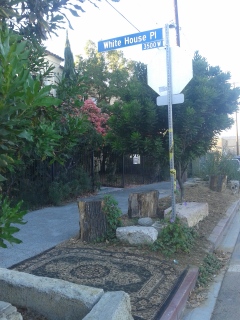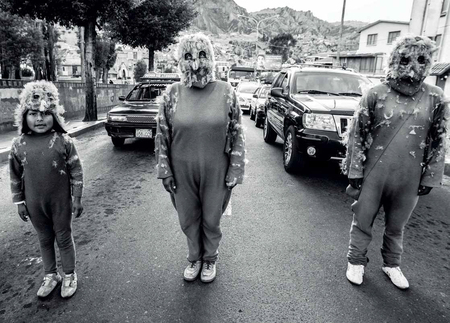JUST DO IT (JUST DON’T TALK ABOUT IT)
Hands up who wants to live in a commune? You sir, your hand is clearly down – can I ask why you don’t want to live in peace amongst your fellow humans?
That’s just it. I don’t think it would be peaceful. Squashed together in a freezing cold shack, smelling to high heaven in recycled clothes, and bickering over whether bread is vegan because of the yeast.
What if I told you there was a place where you didn’t have to share your wife? Where you could take a shower twice a day, eat meat, own your own car and not have to hold hands and sing before every meal?
That ain’t no commune, that’s just normal life.
Exactly.
***
Just Do It is a community of six adults who live on a piece of communally owned land near Santa Cruz, California. In the mid 1980s they decided they wanted to find a home, and instead of scrambling to buy individual bedsits in some grey cube of city-land, they pooled their money and bought a couple of acres with a view of the ocean. The intention was to have no intention: they just wanted to live somewhere nice and couldn’t afford to unless they worked together.
The first thing they did was build a house – a house no one was going to live in. The plan was to build a communal living space with a spacious living room, industrially equipped kitchen and a bathroom suite. The house would act as a temporary sleeping space until the other private homes were built. Using 50ft crossbeams salvaged from an old Santa Cruz restaurant, the team drew up a blueprint and got their hands dirty. In fact, all the electrical and plumbing fixtures were also salvaged, and considering they weren’t paying for labour, they estimate the 2600 sq. ft. house cost a mere $20,800 in total. They had to learn how to mix cement, fit windows and raise a tin roof – but they were all young, committed and hungry for a home (and only one of them had a full-time, 40-hour a week job). Once the Big House was liveable, the community helped each couple build themselves a small private home of 435 square feet, which could be extended in the future with funds taken from the couple’s personal income. The private houses had no kitchens and no showers or baths – and they still haven’t.
Thirty years later and the community is going strong. Kids have come and gone. The private homes have been extended and personalised, and the couples still eat dinner together every night. In fact, this was the one ‘rule’ they made as a community – to always eat dinner together. Their belief is that no one likes meetings. Instead, any interpersonal issues or collective property decisions can be brought up nightly over lamb shanks and a glass of Californian red.
At this point, I want to reiterate that Just Do It isn’t an intentional community, and therefore I’d like to defend why I included it in this blog. The community has no aspirations to confront the problems of how the system coerces us to live. That is not to say the individual residents of Just Do It aren’t politically, artistically or morally active, but that the community itself is not. The important thing is that living projects like Just Do It are an easy step away from the trap of individualism which the current mainstream model promotes. Most people would like to live in a beautiful house, eat delicious food, and have money to go on holiday – this form of communal living denies you none of that. But of course there are pros and cons.
One of the emotional benefits of this kind of community became evident when some of the couples decided to have children. While two of the couples decided they wanted kids, one couple did not. Speaking to the childless man of the six, he revealed how honoured and touched he felt that he could play a central role in the lives of his co-residents’ daughters. It gave him the chance to be a father figure without the responsibility of being an actual father. In name he is no official relation to his co-residents’ daughters, but he is emotionally invested in them. The children themselves benefited from having closer contact with a wider range of adults, and the parents were given more flexibility in work and travel, knowing that their live-in friends were around to watch the kids.
The obvious difficulty with the arrangement is the inflexibility of group ownership. As the residents have all put their time and money into building their home, it would surely be problematic if one couple decided they needed a change and wanted to move. All members of Just Do It have paid occupations in the mainstream world. As is the nature of the market-focussed capitalist system, employment opportunities move in response to where employers can find the cheapest labour. It may be a hassle to relocate from London to Manchester to follow a job with the BBC, but it’s much more tricky if you’re tied into a communal living setting such as Just Do It.
In fact, the project didn’t start with three neat couples. One of the original members was bought out of his share in the early 1990s, for around $25,000. Three other singletons also helped to build the house, but didn’t invest any money for materials. Two of these individuals have stayed closed to Just Do It, and their ‘labour shares’ allow them permanent ‘right to return’ to the property; the third seems to have had a dispute with the couples and is no longer in contact.
The current members are also not without conflict. Recently the community decided to cut down a fir tree which was becoming a fire risk due to its proximity to the Big House. The decision was made while one member was away on business, and when he returned he was not only upset that his favourite tree was gone, but upset he hadn’t been consulted.
Another thing to note is that all the buildings at Just Do It are officially illegal. The community never applied for planning permission, and as far as Santa Cruz county are concerned, the land still holds nothing more than one small Redwood shack. The fact that the site can only be accessed by a private dirt road, and that they’re very friendly with the neighbours, all helps to keep the community go unnoticed. Nevertheless, the residents are all aware that their dream could perish if they made an enemy who decided to turn them in to the authorities, or some unscrupulous blogger wrote about them on the internet … don’t worry, they’re not really called Just Do It.
It may be unsurprising that Just Do It is one of the most successful ‘communities’ that I’ve visited – they’re wealthy, they’re intelligent and their project hasn’t put their own security at risk in the name of a higher cause. Nevertheless, as an avid believer in the mantra that you can’t make other people happy unless you’re happy yourself, I recommend projects like Just Do It as a non-radical step towards a richer life.
In the words of Greg, founding member of Just Do It: ‘The couple is the refuge from the commune and the commune is the refuge from the couple.’
To see a short video on Just Do It, made by the residents, click here



























